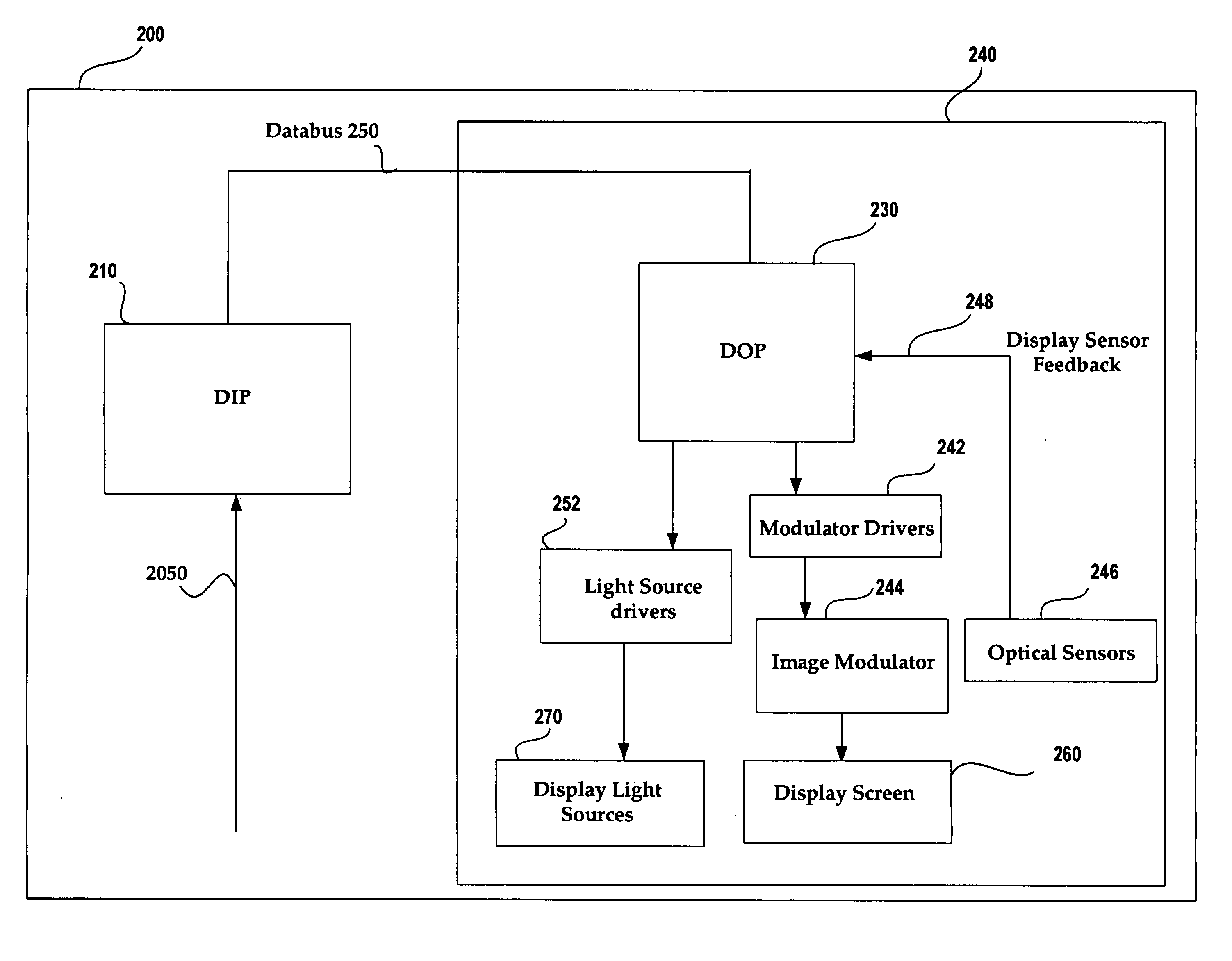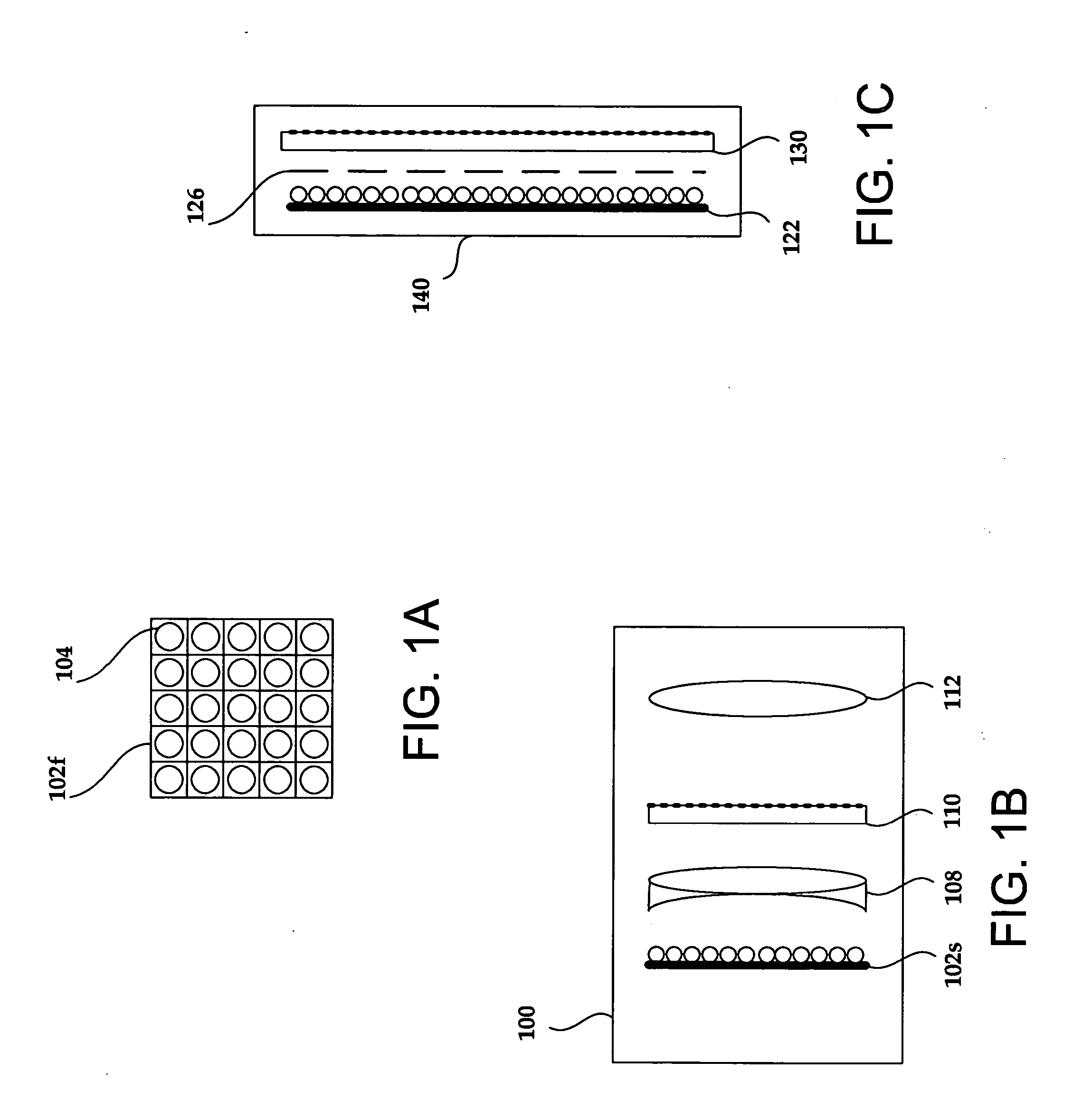Image and light source modulation for a digital display system
light source technology, applied in the field of image processing and modulation system of a digital display system, can solve the problems of reducing magnification, difficult to achieve acceptable visual quality, and changing display characteristics, so as to improve image consistency, enhance color gamut, and improve dynamic range
- Summary
- Abstract
- Description
- Claims
- Application Information
AI Technical Summary
Benefits of technology
Problems solved by technology
Method used
Image
Examples
Embodiment Construction
[0041] The present invention provides improvements in electronic image processing technology and an image processing apparatus for use in an image display system. The apparatus includes a display output processing module that controls both a digital image modulator and one or more light sources illuminating the image modulator.
[0042]FIG. 2 shows an image processing system 200 which includes a Display Input Processor (DIP) 210 and a Display System 240 including a Display Output Processor (DOP) 230 with a common databus 250 coupling the DIP 210 and the DOP 230. Display System 240 also includes an image modulator 244 (comparable to FIG. 1 modulators 110 and 130) coupled to a display screen 260 and via modulator drivers 242 to DOP 230. DOP 230 also includes light source drivers 252 coupled to the display light sources 270 and receives display sensor feedback via path 248 from optical sensors 246. DIP 210 preferably receives image data on line 2050 and reconstructs images both spatially...
PUM
 Login to View More
Login to View More Abstract
Description
Claims
Application Information
 Login to View More
Login to View More - R&D
- Intellectual Property
- Life Sciences
- Materials
- Tech Scout
- Unparalleled Data Quality
- Higher Quality Content
- 60% Fewer Hallucinations
Browse by: Latest US Patents, China's latest patents, Technical Efficacy Thesaurus, Application Domain, Technology Topic, Popular Technical Reports.
© 2025 PatSnap. All rights reserved.Legal|Privacy policy|Modern Slavery Act Transparency Statement|Sitemap|About US| Contact US: help@patsnap.com



